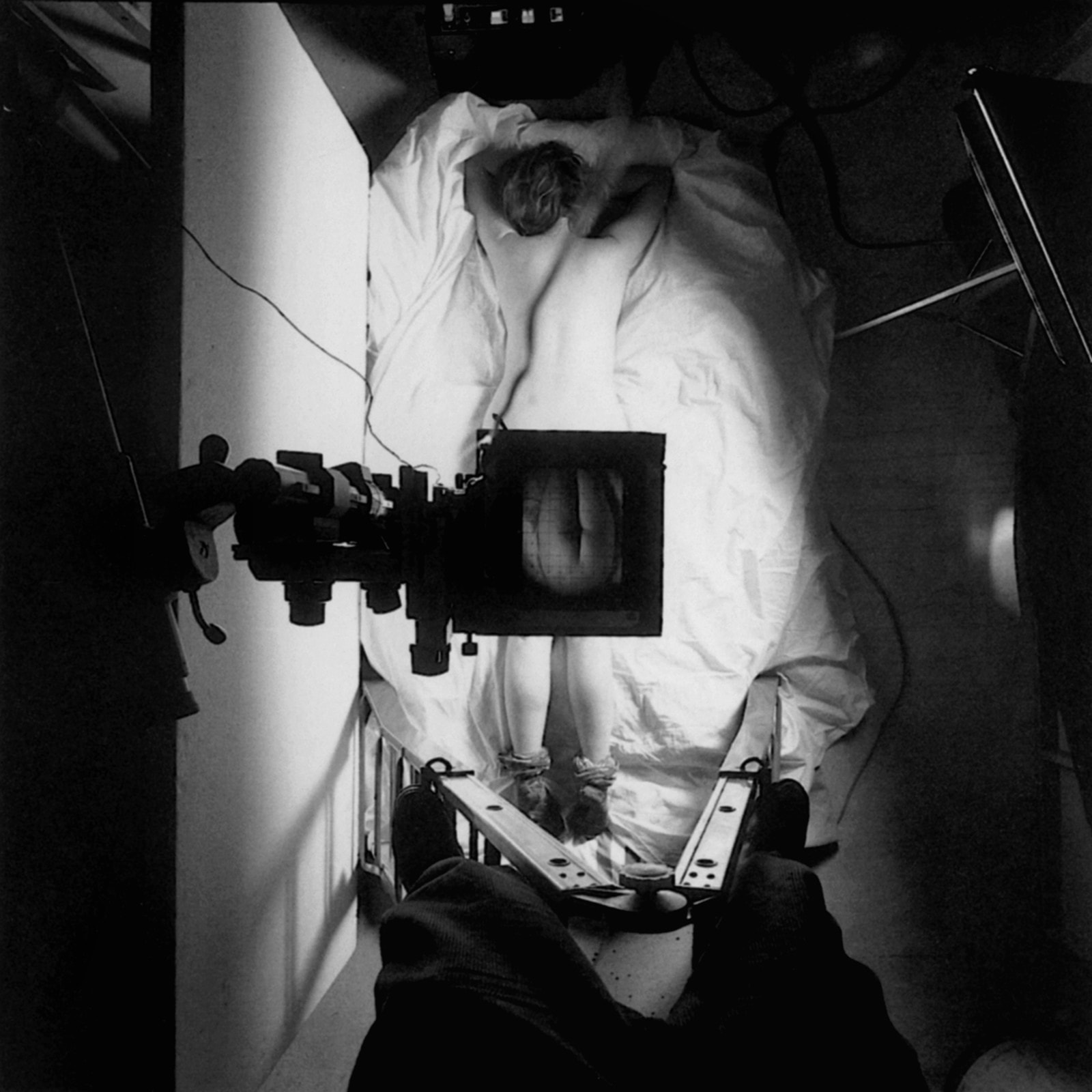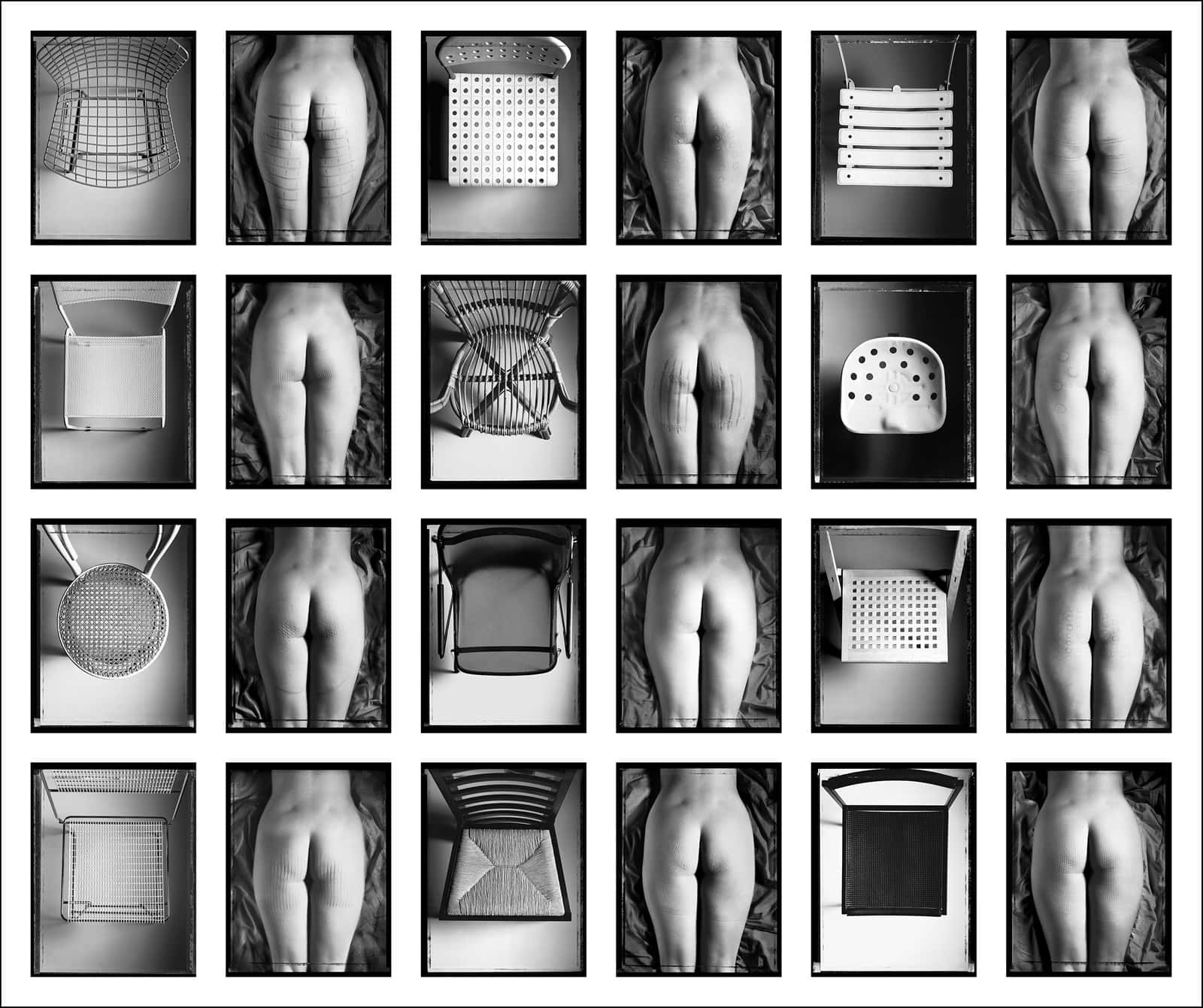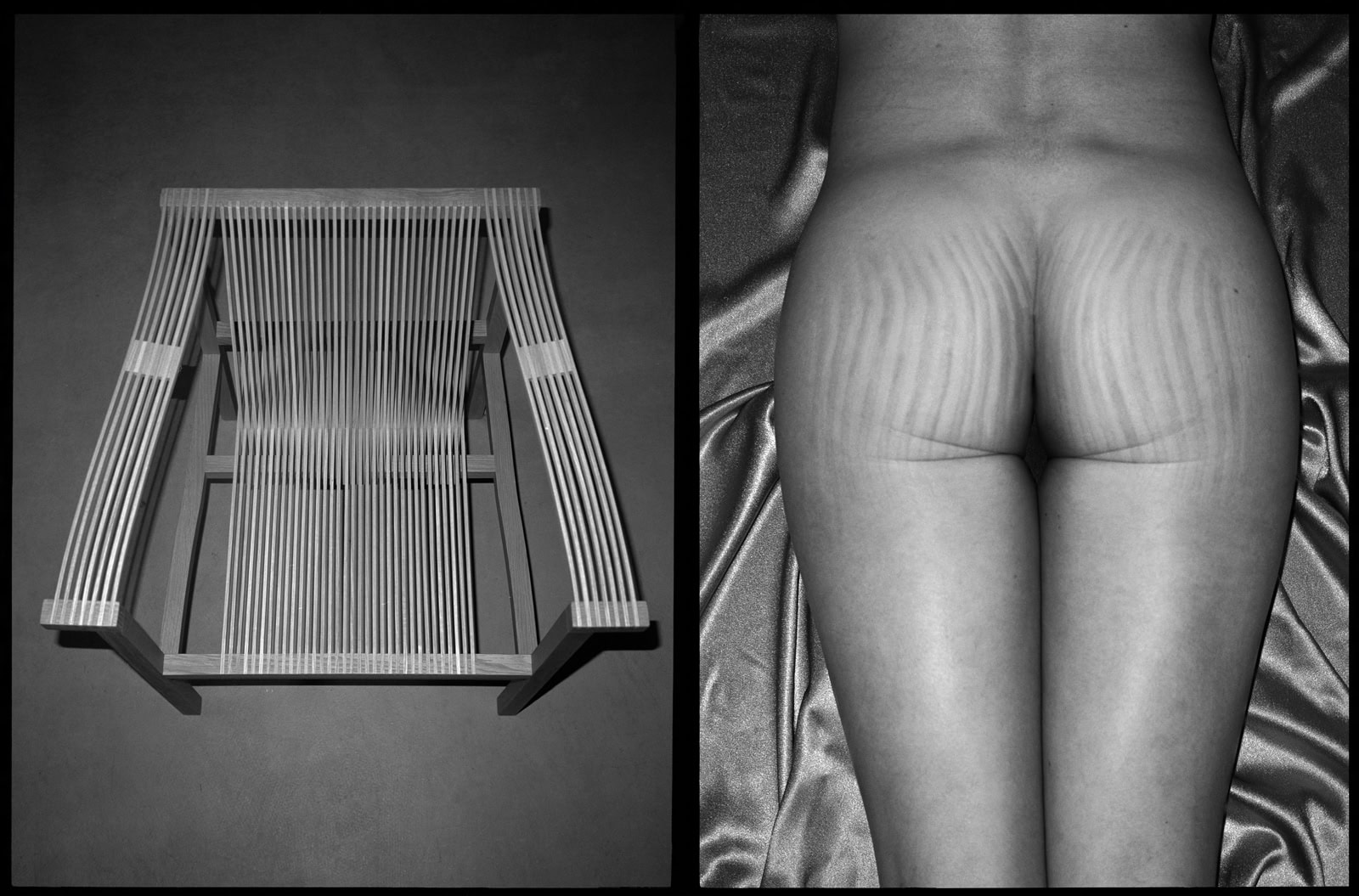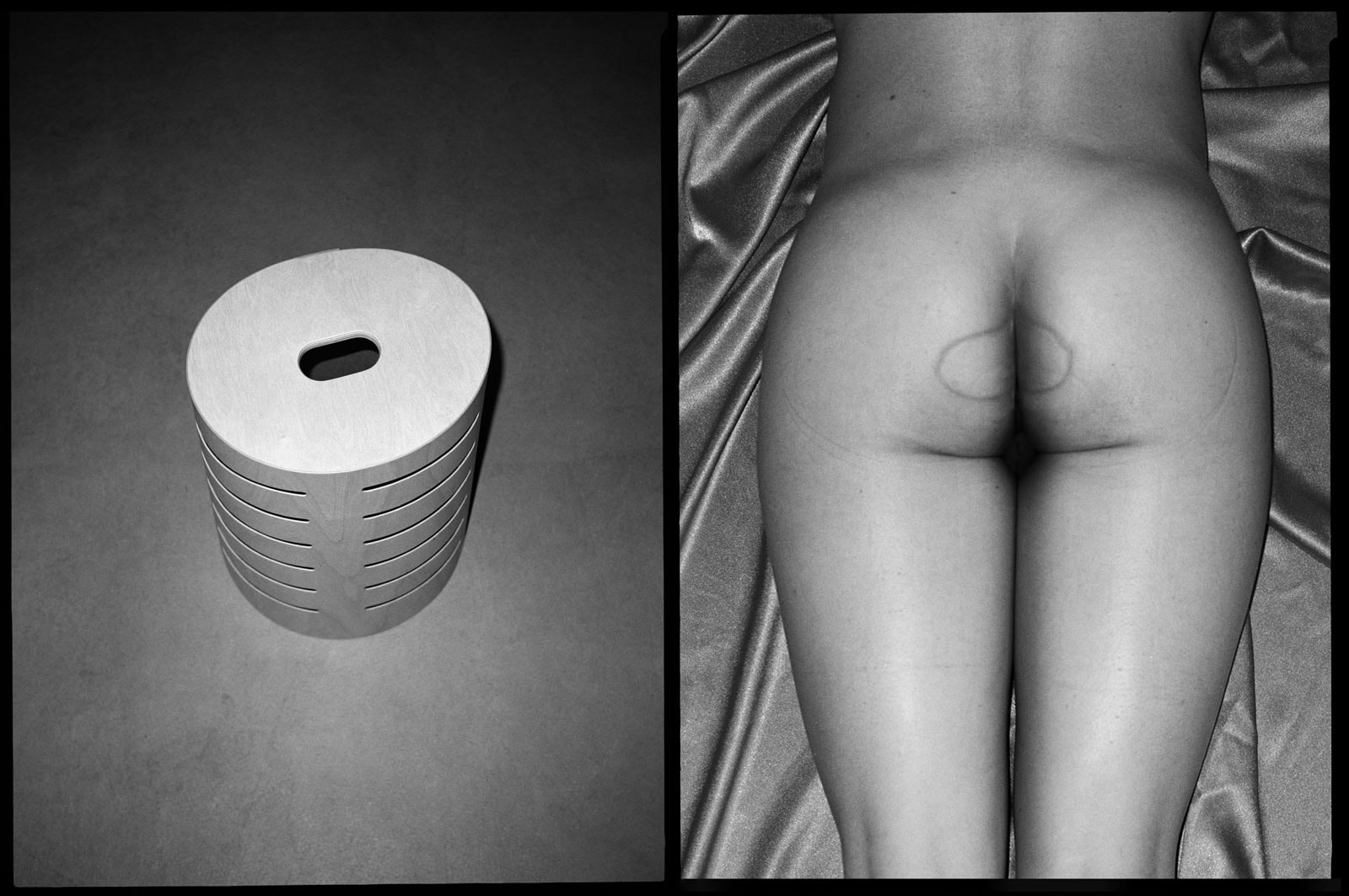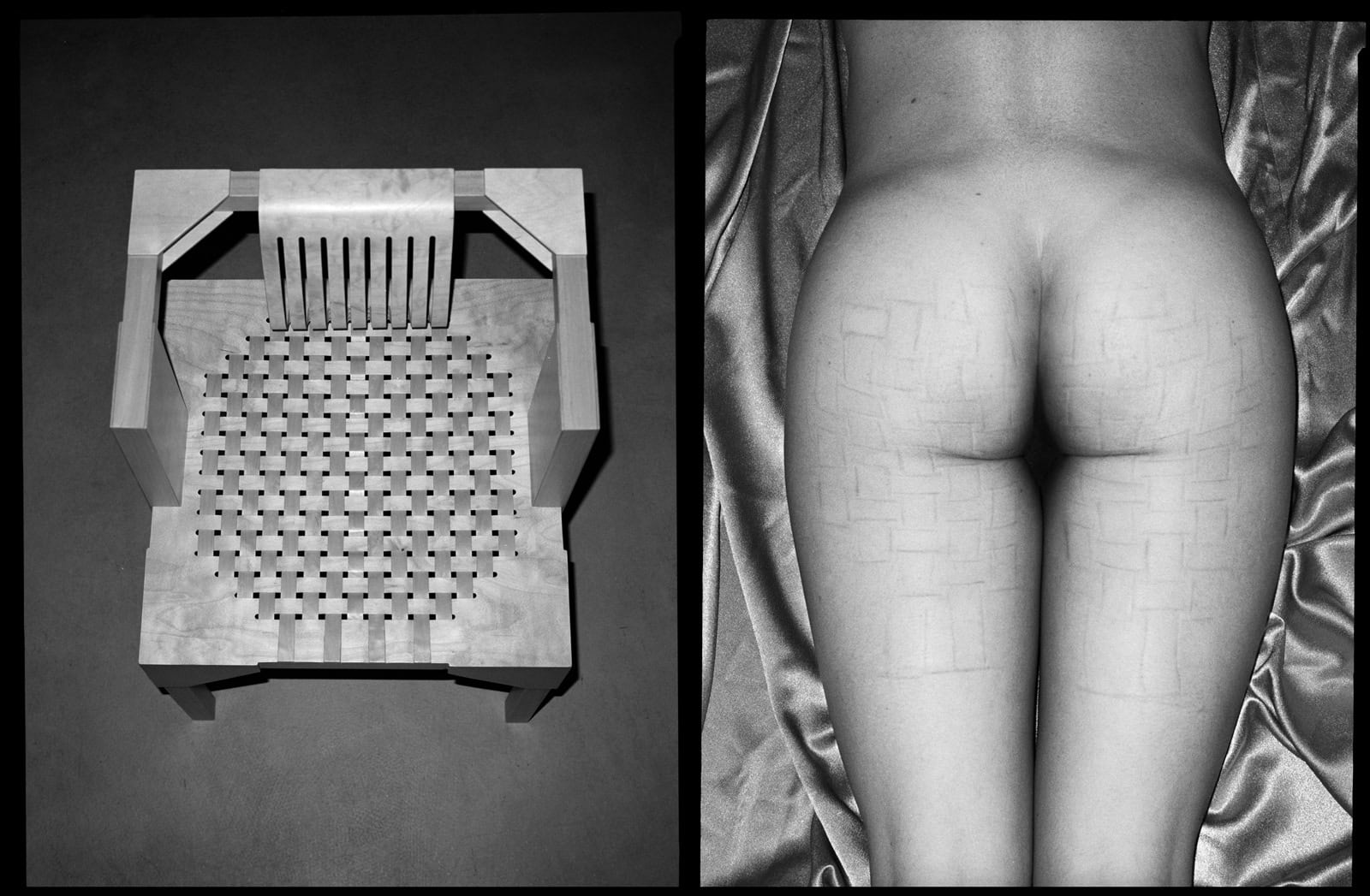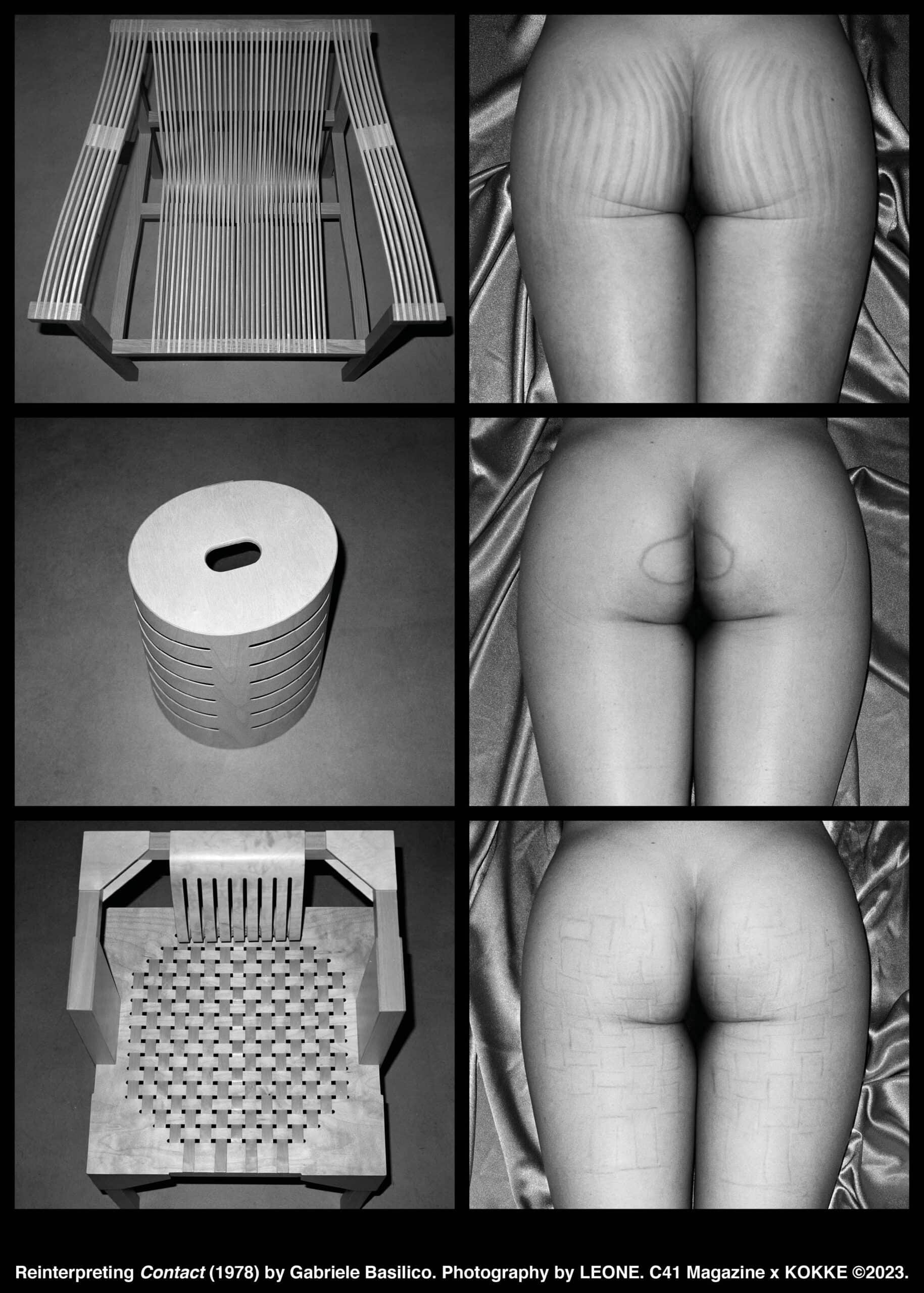In 1978 Gabriele Basilico was invited by the then cultural councillor of the city of Lodi, Andrea Cancellato, to take part, together with Aldo Ballo, at the exhibition Il margine di libertà / L’oggetto: interpretazioni a confronto, dedicated to industrial design.
During his early years as a photographer, Basilico often collaborated with the big names in the Italian design industry such as Cassina, Flexform, Unifor etc., mainly taking traditional still-life photographs for them. However, he chooses on this occasion to put this habit aside, bringing his reflection on the relationship between the human being and the object.
Thus was born the intuition of juxtaposing the more classic still-life images of the chairs of some important international designers with photographs of their fingerprints left on the skin of a model.
“I often need to make small deviations from the main itinerary, perhaps due to the fear of a looming stereotype of a one-way theme, or perhaps for the pleasure of committing transgressions of taking licences, as if to break a lance in favour of the emotional aspect over the rational project. In particular, I must add that the photographer’s eye constantly turned analytically to reality, has stopped, as it surely has for others, on the butts of those who in summer, at the seaside, on crowded beaches, stand up after sitting on those bar chairs made of plastic thread wound in a spiral on a metal frame, and who carry printed on their bodies, a recognisable map of the ‘texture’ of the seat”.
The project is realised with Polaroid 55 film, negative/positive 10×12 cm. format, whose particularity was the presence of both the negative and the positive photosensitive paper. This choice, in addition to recalling the concept of contact and trace–the positive negative play between the film and the photosensitive paper is reiterated by the contrast between the chair and the model’s body–also allows the photographer to work quickly, given the close deadline of the commission. This film, and the availability of the model in lending herself to repeated baths of ice water to allow the traces on her skin to disappear quickly, allowed Basilico to complete the work in just under a week.
Contact thus started out as a divertissement, but turned into a work with a strong symbolic and conceptual value. On the one hand the formal representation of the object, in its geometric, plastic and functional essence, on the other its personification in the interaction with the human body.
Personification is a rather recurrent phenomenon in both art and literature. Even limiting ourselves to the modern Western world, the examples are innumerable. Just think of the personification of the seven deadly sins and the cardinal virtues, of Cesare Ripa’s treatise on iconology (1603), or of Orlando’s sword, which in the Chanson de Roland (XI sec.) takes on an identity of its own through the name given to it (Durendal) and its own will in striking blows.
Basilico with Contact does not limit himself to the personification of the object, but moves into the field of de-objectification and cause-effect.
The personification occurs in the impression. The object is personified because it leaves a mark on the human body, and lives, in another dimension than the functional one, in its negative on the model’s skin. In this way, the piece of design also exists in its absence, that is, in the trace that remains of its use. This is why we can speak of de-objectification, as the object exists beyond its physical and functional presence.
Leone Balduzzi’s approach, proposing for KOKKE an operation that makes explicit reference to Gabriele Basilico’s series, is therefore to bring attention back to the body-object relationship. Recovering and reinterpreting Contact today, it is necessary to go back to reflecting on the function of the object in the contemporary world, on an interaction and an exchange, which leaves a trace, but which we are used to living passively, helping us to observe and define more accurately the interaction, form, materials, function and identity of the product.

